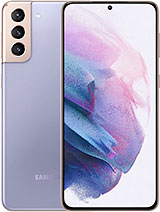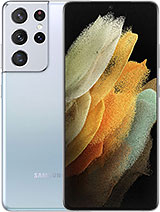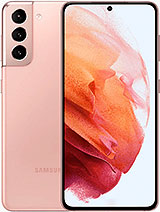Samsung Galaxy S21 Ultra Snapdragon vs Exynos - The TRUTH! | The Tech Chap By The Tech Chap
Okay, this is weird, so I've got two galaxies s21 ultras with me here, one with the Enos 2100 chips from the UK and one with the snapdragon 888 from the US, and, as you guessed from the title, I want to figure out which one is better and if we can finally get some parity between the two models or if, once again, those with the XMOS variant are just getting a bit. Screwed over I've been making these videos for a few years. Now I get the two phones which should be the same, but then it turns out they're not and historically, the snapdragon variant is quite a bit better um. But now here we are with the s21 ultra and not only are my results, not what I expected, but they're, not even what other people are getting. I mean I've watched the runes, excellent video on this and a few others, but my results tell me that actually, these two are pretty neck and neck, which is actually great news, because you don't really want a winner in this video. These should be the same phone they're, both s21 ultras, and I'd say that it's as close as it's ever been, although there are still some important differences.
Okay, let's start with performance, and when I ran my tests and started to realize that my results were not the same as say Mr who's, the bosses. I wanted to replicate one of his tests exactly so. These two phones are set up identically, and I fired up the an tutu benchmark and from round one. The scores are well pretty neck and neck. But of course the big question here is about sustained performance so altogether.
I ran this test five times straight after each other, and if I bring up all the numbers, you can see that they trade blows throughout and surprisingly, by the end, the Enos is in the lead, so a pretty surprising win for the Enos, which is not what I really expected to see. Nor is it what I've seen other people talk about, so I wasn't quite sure what's going on, but I wanted to make sure there wasn't maybe something wrong with my snapdragon version, so I actually uh went out and bought another s20 ultra myself and had it reshipped over here internationally, as fast as I could, which cost quite a bit of money. But I wanted to make sure this video was as fair and as thorough as possible. So with the two snapdragons and the one Enos they've all got the latest software all set up the same. Let's do it again: let's go through five runs of an tutu and from what I'm looking at there's two big takeaways.
Firstly, if you look at the two snapdragon phones, I mean these are identical devices pretty much, yet we're getting slightly different results. Secondly, the Enos is slightly behind throughout, but if we look at run 5, it's bang on the average score of the two snapdragons. What is consistent, though, is that the Enos chip does run hotter. It's a solid 8 degree Celsius hotter before we even start the test, and it's about 12 degrees hotter by the end. So that is a bit concerning, but so far at least it doesn't seem to be having any major impact on the results.
What's fascinating, though, is, if I take my laser thermometer and then take an external reading of the two phones. The snapdragon model is about 1.5 degrees hotter. Now these are different. Colors we've got the phantom silver versus the phantom black and that could slightly skew the results, but even so we're not seeing that big internal difference in temperature reflected on the outside and in how hot it feels to hold. But an tutu is just one test, and so, after a half hour break, so they've all cooled down properly.
I ran geek bench five and here they're, all within a percent or two of each other, within the margin of error, really switching to OpenGL, which is more of a graphics test, and the Enos is way out in front speaking of graphics, though, let's run the 3dmark wildlife test, because this is one of the latest benchmarks and should give us a good idea of the potential graphics performance and the Enos comes out in front of about four percent. I then run it twice more and after the third test, while they've all dropped a couple of hundred points, the Enos is still winning, although only by a few percent. It's not really a big difference, but there's still that big question of sustained performance, and so after running the tests and then a 20-minute wildlife stress test on all three. The scores are well pretty similar to perform. The two snapdragons are within a percent of each other, so again margin of error, but the Enos has higher best and lowest loop scores.
Okay enough benchmarks. Let's see how this translates into a real world performance. Will you actually notice a difference in using them every day? Well, let's start with a good old-fashioned, app launching test and going through a couple of games and a few lighter social apps, and I did this test three times for each phone of course, closing all the apps between the tests, but in all three run through. The Enos was just a tiny bit quicker by about three seconds again: it's not something you'd really be able to notice in day-to-day life, but from the three times I did this. The Enos was faster every time, even if it was only between two and four seconds.
Okay moving on and let's see how they fare with a video export challenge, I shot a minute-long, 4k video on both loaded, it into premiere rush added, a film color filter and some text at the start on the end and then timed the 4k30x board. Now my tapping of the timer is a little delayed, so I'm going by the video footage as I'm editing this, but the Enos takes a hair over 2 minutes and 18 seconds versus 2 minutes 37 on the snapdragon, and I think one of the most significant results we've seen so far. Now throughout this video, I'm trying to be as thorough and as fair as possible, so running it again and the times are within milliseconds of the first run and again the snapdragon is 13 slower, but what about gaming? Well, I downloaded game bench. Pro fired up a bit of armor mobile ups, which is quite a demanding game, and it also supports 120 hertz and starting from the same load point on both. I played the game for 15 minutes on each phone, doing as close to identical moves as I possibly could, and at the end, if I put the results side by side, you can see the median frame rate on the snapdragon is 115 versus 120 on the Enos.
The battery drain is exactly the same, though at minus 8 per hour, but we'll come back to this in a second, but it seems to be yet another small win for the Enos. However, raw performance aside, the ubiquity of the snapdragon chip does give it some advantages, including developers potentially optimizing it better in their games. For example, in PUBG, you have to use the lowest smooth graphic settings to get 60 fps, whereas on the snapdragon you can get 60 with the high or HDR settings. Plus you have the option of the ultra HD, although that then does bring you back down to 40. , but either way you're getting more graphics and more frame rate options with the snapdragon model.
So that's a lot of information to take in, but my takeaway when it comes to performance, not only have Samsung caught up to the ten to twenty percent deficit. We were seeing last year with the exodus 990, but it's consistently slightly outperforming the 888. In my tests, CPU temperatures are higher on the Enos and in some games like PUBG, they just play better with a snapdragon chip due to the optimizations. But if I had to say which is faster overall from my tests at least, I've got to give it to the Enos, which is not what I thought I'd be saying at all, and I do appreciate it's contrary to what a lot of other people are saying, but I can only share with you my results, and I've tried to be as scientific as possible, including buying additional phones uh for this video, hmm, so that's performance, but what about battery life? And if you're hoping this would be more clear-cut? Well, it isn't. Unfortunately, now you may have seen my big iPhone 12 versus galaxy s21 rundown test from a few days ago, and in that video, where I go through hours of social media, gaming, 4k, camera recording and video playback tests.
In the end, the snapdragon model lasted 22 minutes longer than the Enos, although, given that's the difference between 9 hours and 4 minutes versus nine hours of 26, which works out to be about four percent difference, it's not that significant. Funnily enough, though, when I ran all the benchmarks earlier, the results were the other way around with the Enos. A couple of percents ahead of the snapdragon, so it does seem to vary based on what apps you're using now, I'm not sure how helpful that was, but again when it comes to battery life. Previously, with the note series and even to a greater extent, the s20 series. From last year, we were seeing the snapdragon version last a good hour or so longer than the Enos model, but now well at most it's about 20 minutes and a couple of percents, but really there's not that much in it.
Now. Last but not least, let's compare the cameras, because the different chips also give us different ISPS. So, even though the lenses are the same, the processing may be different. These are shots side by side, no filters or effects and without the scene optimizer which I've found can significantly change. How a photo looks particularly the saturation and not always for the better, but there's a clear difference in the warmth between these two shots, and it's a similar story with this portrait photo of Sarah, the snapdragon leans towards a slightly more saturated, slightly purple hue, although when we punch in, I am drawn to the snapdragon model, which looks quite a bit more realistic and higher quality again, these are supposed to be the same phone, it's kind of crazy.
Another big difference is when you zoom in. If we go through the different lenses, when we get to 30 times, the Enos is noticeably lighter and the building in the foreground is a lot sharper. However, at the still ridiculous 100 times, space zoom, I mean they're both totally unusable, but you can see there's a lot of noise reduction happening on the snapdragon, so it's smoother and well less noisy, but at the expense of some finer detail that we see on the Enos now switching to low light and actually there's very little difference between them. Here. This is a night mode, shot, and they're both sharp and have excellent dynamic range, but there is a big difference with regular non-night mode photos in low light and like when we zoomed in the snapdragon's noise reduction, just smoother everything out with the x-mas being a lot noisier and grainier, although it seems switching to night mode, does even the playing field.
Here's another example first without night mode, and it does seem as if the x naught is maybe going for a higher ISO as it is brighter, but at the cost of far more noise. So I do prefer the snapdragon's regular, low light photos, but again with night mode. It's pretty much a tie, but let's switch to video and this is being shot at 4k in very tricky lighting and I actually had to triple check. I got these in the correct order, because low light video appears to reverse what we saw with low light photos this time. The snapdragon is a lot noisier, but we are seeing more detail, whereas the Enos is overly softened, but with a lot less grain.
So it's kind of a toss-up. Do you want a more detailed but grainier video or a super noisy, but more detailed one? So where does that leave us? Well, my results do seem to contradict a lot of what other people are saying, uh in other videos and online, and all I can say to that, is I don't know honestly. I actually messaged Aaron from Mr who's boss uh to talk about these results a little. He didn't know what to tell me. I didn't know what to tell him, but our results are just different, and I know that we're both doing our tests as methodically and scientifically as possible, and I've even tried to replicate some tests.
He's done. I've even, as I say, bought a third phone uh for this test, but it does show that performance in particular can vary significantly between benchmarks, even between the same phone, and so that can skew conclusions and so from my very extensive testing, and I've been doing this for years now. I have to say that I think the ex-nos is slightly faster than the snapdragon in the tests that I've run. However, I do still think the snapdragon model just comes out ahead when it comes to the camera, but the thing is most of this is academic and a bit of a moot point anyway, because unless you're going to buy your phone internationally and reship it, which some people do- and I have for one of my phones here so while we can argue maybe debate about which is a couple of percents faster, either way, it's really not about that. It's just trying to be able to prove that uh one territory or region isn't really being uh.
You know left out compared to another one which historically, for the last couple of years at least we really have been here in the UK in Europe and wherever we've got the Enos, and I can tell you honestly that where I have switched to the snapdragon models of the s20 and the note 20 last year, because well frankly, I was not happy with the Enos 990 this year. I'm actually happy to stick with the Enos s21 ultra. So I really hope you guys enjoyed this video. I did put a lot of work into it. So uh, well, hopefully it was useful if you do want to see more from me, then hit that subscribe button below and let me know your thoughts about the s2m ultra and also this snapdragon vs Enos debate in the comments below.
Thank you so much for watching guys, and I'll see you next time right here on the tech chat.
Source : The Tech Chap



























